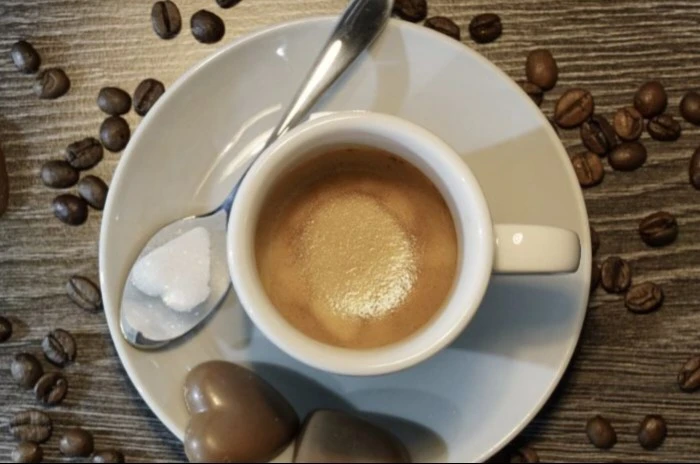Making great espresso at home is both an art and a science. While it may seem intimidating at first, with the right tools, techniques, and practice, you can pull a perfect shot just like a professional barista. This guide will walk you through everything you need to know—from choosing the right equipment to mastering the extraction process.
What Is Espresso
Espresso is a concentrated coffee beverage brewed by forcing hot water through finely-ground coffee under high pressure. It has a rich, bold flavor with a creamy layer on top called crema, which is a sign of a well-extracted shot.
Unlike drip coffee, espresso is thicker, stronger, and served in smaller quantities. It’s also the foundation for many popular drinks like cappuccinos, lattes, and Americanos.
Essential Equipment for Home Espresso
To make great espresso at home, you’ll need the right tools. Here’s a breakdown of the essential equipment:
Espresso Machine
The espresso machine is the heart of the process. There are three main types:
Manual Lever Machines: Require skill and physical effort but offer full control.
Semi-Automatic Machines: The most common for home use; they control water flow but let you manage grinding and tamping.
Automatic/Super-Automatic Machines: Do everything from grinding to extraction with minimal input.
For beginners, a semi-automatic machine strikes a good balance between control and convenience.
Coffee Grinder
A high-quality burr grinder is crucial because espresso requires a fine, consistent grind. Blade grinders don’t provide the uniformity needed for proper extraction.
Fresh Coffee Beans
Always use freshly roasted beans (within 2-4 weeks of roasting) and grind them just before brewing. Stale or pre-ground coffee won’t produce good crema or flavor.
Tamper
A tamper compresses the coffee grounds evenly in the portafilter. A 58mm flat-base tamper is standard for most home machines.
Scale
Precision matters in espresso. A digital scale (accurate to 0.1g) helps measure the right coffee dose and output.
Other Accessories
- Portafilter – Holds the coffee grounds during extraction.
- Milk Frother(if making milk-based drinks) – Steam wand for texturing milk.
- Timer – Helps track extraction time.
Choosing the Right Coffee Beans
Not all coffee beans work well for espresso. Here’s what to look for:
Roast Level
Medium to Dark Roast: Traditional espresso blends are roasted darker for a bolder, chocolatey, or caramelized flavor.
Light Roast: Can be used for brighter, fruitier espresso but requires precise extraction.
Blend vs. Single-Origin
Blends: Often designed for espresso, balancing acidity, sweetness, and body.
Single-Origin: Can highlight unique flavors but may be trickier to dial in.
Freshness
Buy whole beans and store them in an airtight container away from light, heat, and moisture. Avoid freezing unless necessary.
The Espresso Brewing Process
Now, let’s break down the step-by-step process of making espresso.
Measure and Grind the Coffee
Dose: A standard single shot uses 7-9g of coffee, while a double shot uses 14-18g.
Grind Size: The grind should be fine, resembling powdered sugar. Adjust based on extraction time—too fine causes over-extraction (bitter), too coarse causes under-extraction (sour).
Distribute and Tamp the Grounds
Distribution: After grinding, stir the coffee to break clumps and ensure even extraction.
Tamping: Apply 30-40 lbs of pressure to create a level, compact puck. Uneven tamping leads to channeling (water bypassing parts of the coffee).
Preheat the Machine
- Run hot water through the portafilter to warm it up.
- Flush the group head to stabilize temperature.
Pull the Shot
Brew Time: A good extraction takes 25-30 seconds.
Yield: For a double shot, aim for 36-40g of liquid espresso.
Pressure: Ideal pressure is 9 bars.
Evaluate the Shot
Crema: Should be thick, golden-brown, and persistent.
Taste: Balanced sweetness, acidity, and bitterness. Adjust grind, dose, or time if needed.
Troubleshooting Common Espresso Problems
Even experienced baristas encounter issues. Here’s how to fix them:
Sour Espresso
Cause: Under-extraction (too fast, grind too coarse).
Fix: Grind finer or increase dose slightly.
Bitter Espresso
Cause: Over-extraction (too slow, grind too fine).
Fix: Grind coarser or reduce brew time.
Weak or Watery Espresso
Cause: Too little coffee or too coarse grind.
Fix: Increase dose or adjust grind size.
No Crema
Cause: Stale beans, incorrect grind, or low pressure.
Fix: Use fresher beans, check grind size, and ensure machine pressure is adequate.
Milk Steaming and Latte Art
If you enjoy milk-based drinks, mastering steaming is key:
Frothing Technique
Position the Wand: Just below the milk’s surface to create a whirlpool.
Stretch the Milk: Introduce air for 3-5 seconds until slightly expanded.
Heat to 60-65°C (140-150°F) – Too hot scorches the milk.
Pouring Latte Art
Start with well-textured milk (silky, no large bubbles).
Pour slowly, then raise the pitcher to create designs like hearts or rosettas.
Maintaining Your Espresso Machine
Proper care extends your machine’s lifespan:
Daily Cleaning: Backflush with water, wipe the steam wand, and purge after each use.
Weekly Cleaning: Use a blind filter and cleaning tablets for deep cleaning.
Descaling: Every 2-3 months (depending on water hardness).
Final Tips for Home Baristas
Practice Consistently: Small adjustments make big differences.
Keep Notes: Track grind size, dose, and extraction time for repeatability.
Experiment: Try different beans, ratios, and techniques to find your perfect shot.
Conclusion
Making great espresso at home is an achievable goal with the right knowledge, tools, and practice. By investing in quality equipment, using fresh beans, and mastering the brewing process, you can enjoy café-level espresso without leaving your kitchenHappy brewing!
Related topics:
Can I Make Espresso with a Coffee Maker?
Can I Make Espresso with Regular Coffee?


